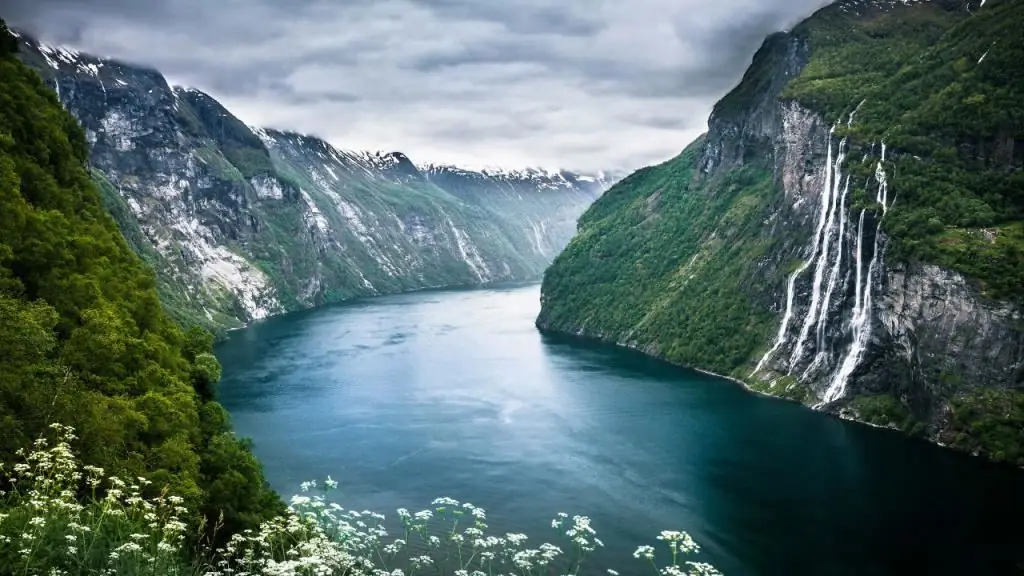- Author Harold Hamphrey [email protected].
- Public 2023-12-17 10:06.
- Last modified 2025-01-24 11:10.
In the south of the cozy town of Bolnisi, located in the southern part of the Trialeti Range (Lesser Caucasus), the small river Mashavera carries its waters. This area has always been a deep province. Throughout its history, until the settlement became part of Russia, it belonged to Georgia, Armenia. And sometimes even the Turks.
What is the city of Georgia Bolnisi today? Attractions and other information about it are presented in this article.

General information about the town
The city is the capital of the Bolnisi municipality. This calm and quiet town, hidden among the greenery of coniferous vegetation, stretches along the highway for several kilometers. The infrastructure of the city is several shops and cafes, where visitors are offered excellent barbecue and traditional Georgian khachapuri. There are no modern hotels and inns for tourists in Bolnisi yet.
There is a railway station of the Bolnisi railway of Georgia (Marneuli-Kazreti line) in the city. It should also be noted that in the nearbyRachisubani village has a source of mineral water, which is not inferior in taste to the famous Borjomi water.

History in Brief
Bolnisi (Georgia) has a long and rather interesting history. At the time of its foundation, the settlement was called Choruk Kemerli, and for the first time it was renamed Katerinfeld in 1818 in honor of Ekaterina Pavlovna, the sister of Tsar Alexander I. At that time, German families from Swabia settled here (95 in total). After the hostilities of 1918, the Bolsheviks took over the region, and in 1921 the village was renamed and became known as Luxembourg. The name was given in honor of the famous German communist R. Luxembourg.
In connection with mass repressions at the beginning of the Great Patriotic War, there was a resettlement of the German population in Siberia and Kazakhstan. Moreover, only those Germans who were already married to Georgians were left in the settlement.
The next change in the name of the settlement took place in 1944. Since then, it has become known as Bolnisi. In Georgia, an ancient village located to the southwest of it has the same name. After such serious transformations, the settlement remained multinational, but until now the majority of the population is not Georgians. The largest community is represented by representatives of the Azerbaijani nation. Since December 1967, Bolnisi has had the status of a city.

Attractions
The city, which has a rather long history, can be called young, as it actively develops andit began to be built only in the 20th century. The city of Bolnisi, which is the starting point for visiting the historically significant ancient objects of this region, can also be included in the itineraries of excursions in Georgia.
Among the cultural and architectural objects we can mention the Church of St. George. There is a Kolagiri fortress in the region, located in the village of Tsurtavi, as well as the temple-monastery of Tsugrugasheni. In the rural settlements of Kveshi and Paladauri there are also ancient medieval fortresses, perfectly preserved, despite their considerable age. There are two churches in the village of Tandzia, and a magnificent panorama opens up next to the surrounding hill.

Not far from Bolnisi is the modern village of Kazreti. From the road you can see its white high-rise buildings. During the Soviet era, a large copper mine was founded and operated here, which still operates today. Scientists in Kazreti have also discovered gold deposits, but their development has not yet been carried out. There is a Sameba church on the territory of this modern village, the construction of which dates back to the period of the 17th-18th centuries.
Bolnisi Zion
This architectural object is the most grandiose monument of antiquity of the study area. This is one of the oldest Christian churches in Georgia, dating back to the 5th century. On the walls of the well-preserved Basilica of Sion there is an inscription made in the old Georgian language, which is of great value to the entire Georgian people.

The three-nave temple is built on a three-stage plinth. In the east wing of the temple some time afterconstruction, a baptistery was added, which, unfortunately, is not very well preserved. The pilasters and columns of the temple are decorated with images of trees and animals.
Cultural institution
In the small town of Georgia, Bolnisi, there is also a local history museum. The main direction of its expositions is archeology.
On the first floor, there is an exhibition of interesting archaeological finds discovered in the site of the Dmanisi settlement. They belong to the Neolithic period. On the second floor there is an exposition of Bolnisi of the Middle Ages - the key to the Dmanisi fortress, Bolnisi crosses and many more. other exhibits.

In conclusion about the population
The small Georgian town of Bolnisi had almost 16,000 inhabitants in 1968.
By 1989 (census data) the population of the city decreased slightly and amounted to just over 15 thousand people, of which 92% are Azerbaijanis, and the rest are Ossetians, Georgians and Armenians. According to data received in 2014, the population of Bolnisi is 8960 people.






